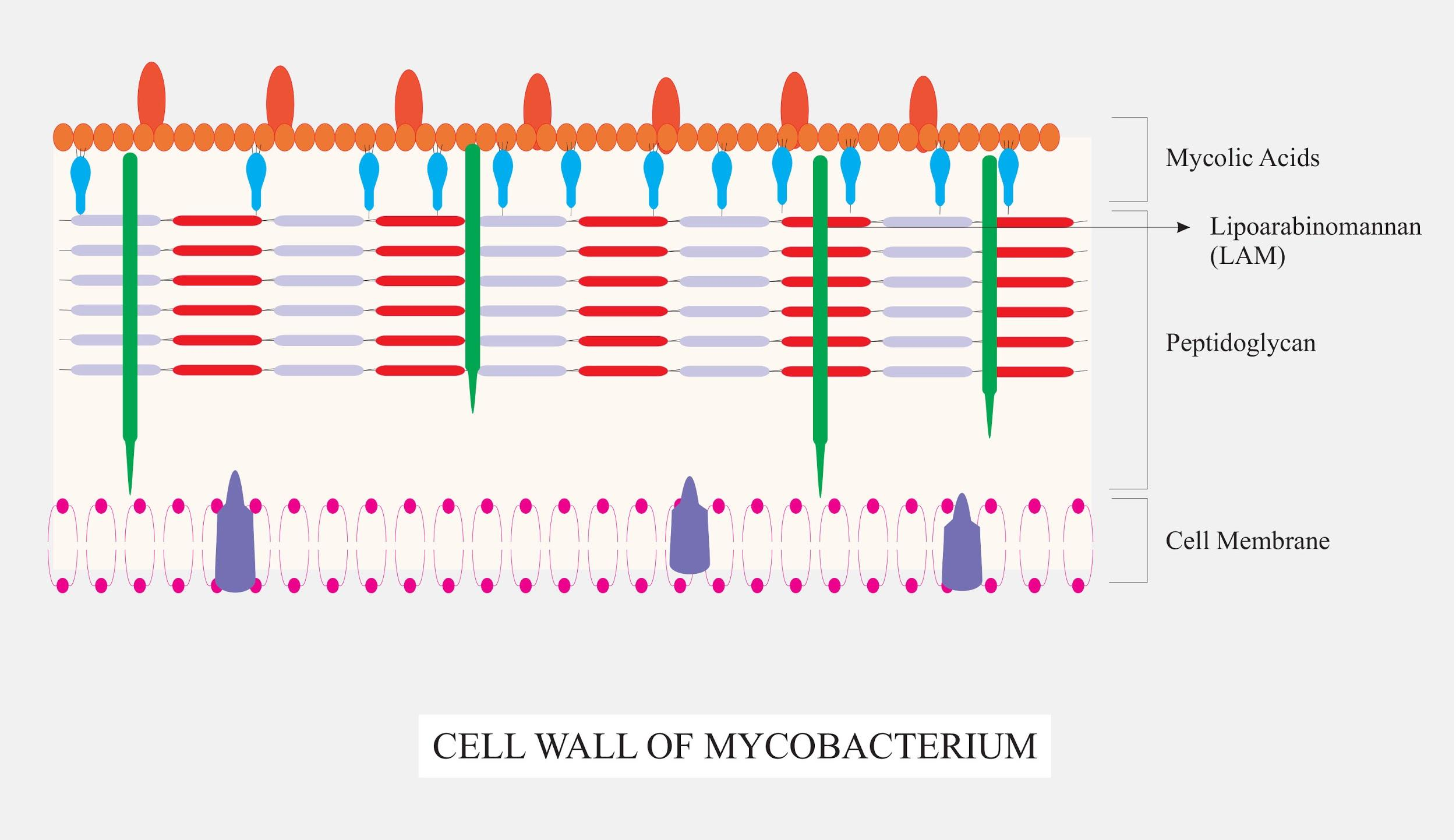
Pathogenicity of bacteria causing tuberculosis and leprosy is due to
(a) Cholesterol
(b) Ergosterol
(c) Prostaglandins
(d) Glycerol
(e) Wax-D
Answer
557.1k+ views
Hint: The pathogenicity of bacteria causing tuberculosis and leprosy is due to a certain type of lipids that are in abundance in their cell envelope. This lipid imparts resistance to staining as well as degradation from various antibiotics.
Complete answer:
Mycobacteria is a rod-shaped bacteria that belongs to the group of Actinomycetes. They are gram-positive bacteria, aerobes, and are usually obligate parasites. Their various strains cause highly infectious diseases in humans. The structure of the cell wall is a major reason for its high virulence. Their cell wall is rich in lipid content where Wax-D is the major lipid constituent. Its high concentration has led to their resistance to various antibiotics as well as killing by acidic and alkaline compounds.
Additional Information:
-Mycobacterium tuberculosis is pathogenic bacteria that causes tuberculosis in humans. It is an obligate aerobe , and thus they always require a well-aerated area to survive and multiply. For this reason, they always occupy the upper lobes of the lungs which are always rich with oxygen. As Tuberculosis is a highly infectious disease, it is transmitted by the infectious droplets released from the mouth of an infected person whenever it sneezes or coughs.
-Leprosy is caused by Mycobacterium leprae. It also spreads by droplets from an infected individual. This bacteria proliferates slowly and thus takes a generation time of 10-14 days while its incubation period can last from several months to years at times.
-Leprosy is also known as Hensen’s disease. It is a type of chronic infectious disease that can last for years in an individual. The bacteria cause disfigurement of the skin leading to the formation of sores all over the body. The infection may even spread to the peripheral nervous system. Damage of nerves leads to consistent fatigue experienced by the patient as well as weakening of muscles.

So, the correct answer is ‘Wax-D.’
Note:
-A generation time in bacteria is the time period between its two consecutive population growth or the time it takes to double its population.
-An incubation period of bacteria refers to the time period it takes to develop its effects or first arrival of symptoms since its exposure.
Complete answer:
Mycobacteria is a rod-shaped bacteria that belongs to the group of Actinomycetes. They are gram-positive bacteria, aerobes, and are usually obligate parasites. Their various strains cause highly infectious diseases in humans. The structure of the cell wall is a major reason for its high virulence. Their cell wall is rich in lipid content where Wax-D is the major lipid constituent. Its high concentration has led to their resistance to various antibiotics as well as killing by acidic and alkaline compounds.
Additional Information:
-Mycobacterium tuberculosis is pathogenic bacteria that causes tuberculosis in humans. It is an obligate aerobe , and thus they always require a well-aerated area to survive and multiply. For this reason, they always occupy the upper lobes of the lungs which are always rich with oxygen. As Tuberculosis is a highly infectious disease, it is transmitted by the infectious droplets released from the mouth of an infected person whenever it sneezes or coughs.
-Leprosy is caused by Mycobacterium leprae. It also spreads by droplets from an infected individual. This bacteria proliferates slowly and thus takes a generation time of 10-14 days while its incubation period can last from several months to years at times.
-Leprosy is also known as Hensen’s disease. It is a type of chronic infectious disease that can last for years in an individual. The bacteria cause disfigurement of the skin leading to the formation of sores all over the body. The infection may even spread to the peripheral nervous system. Damage of nerves leads to consistent fatigue experienced by the patient as well as weakening of muscles.

So, the correct answer is ‘Wax-D.’
Note:
-A generation time in bacteria is the time period between its two consecutive population growth or the time it takes to double its population.
-An incubation period of bacteria refers to the time period it takes to develop its effects or first arrival of symptoms since its exposure.
Recently Updated Pages
Master Class 12 English: Engaging Questions & Answers for Success

Master Class 12 Business Studies: Engaging Questions & Answers for Success

Master Class 12 Economics: Engaging Questions & Answers for Success

Master Class 12 Social Science: Engaging Questions & Answers for Success

Master Class 12 Maths: Engaging Questions & Answers for Success

Master Class 12 Chemistry: Engaging Questions & Answers for Success

Trending doubts
What are the major means of transport Explain each class 12 social science CBSE

Which are the Top 10 Largest Countries of the World?

Draw a labelled sketch of the human eye class 12 physics CBSE

Explain sex determination in humans with line diag class 12 biology CBSE

The pH of the pancreatic juice is A 64 B 86 C 120 D class 12 biology CBSE

Explain sex determination in humans with the help of class 12 biology CBSE




